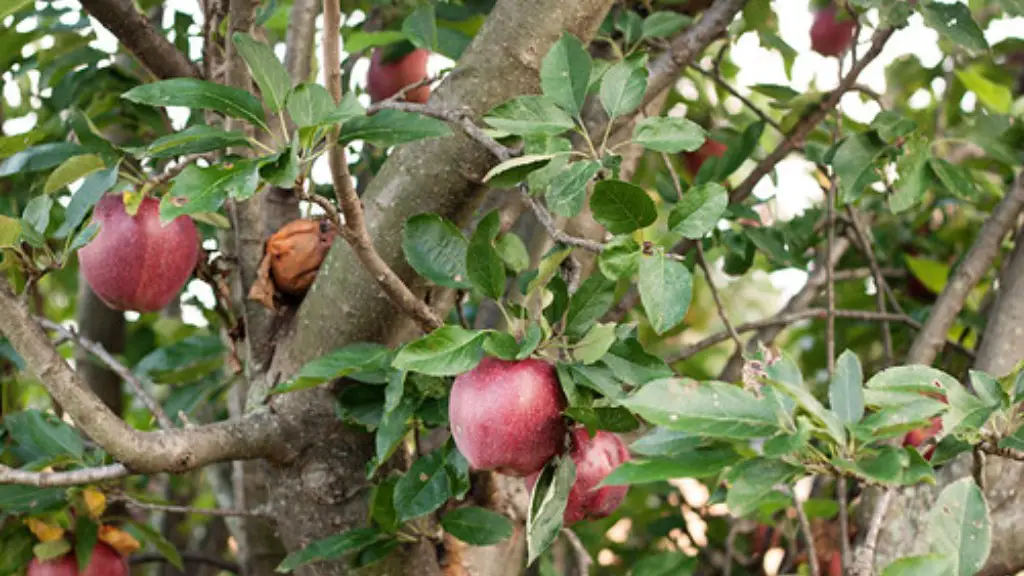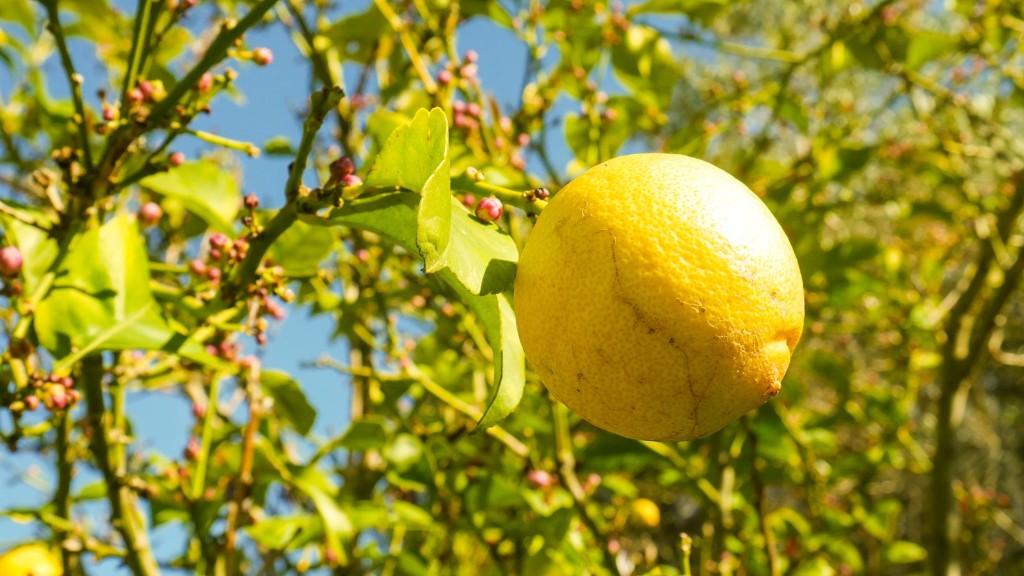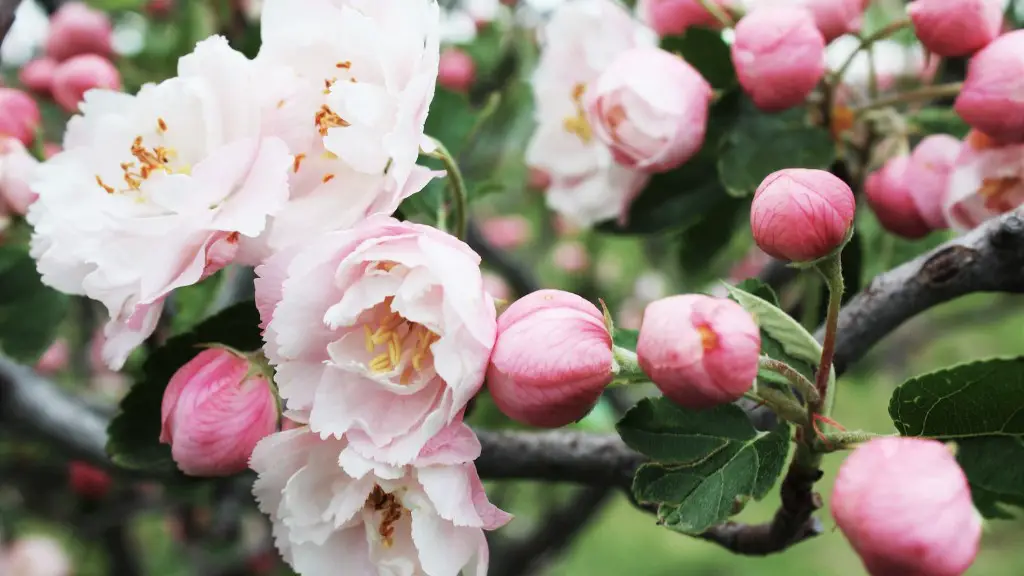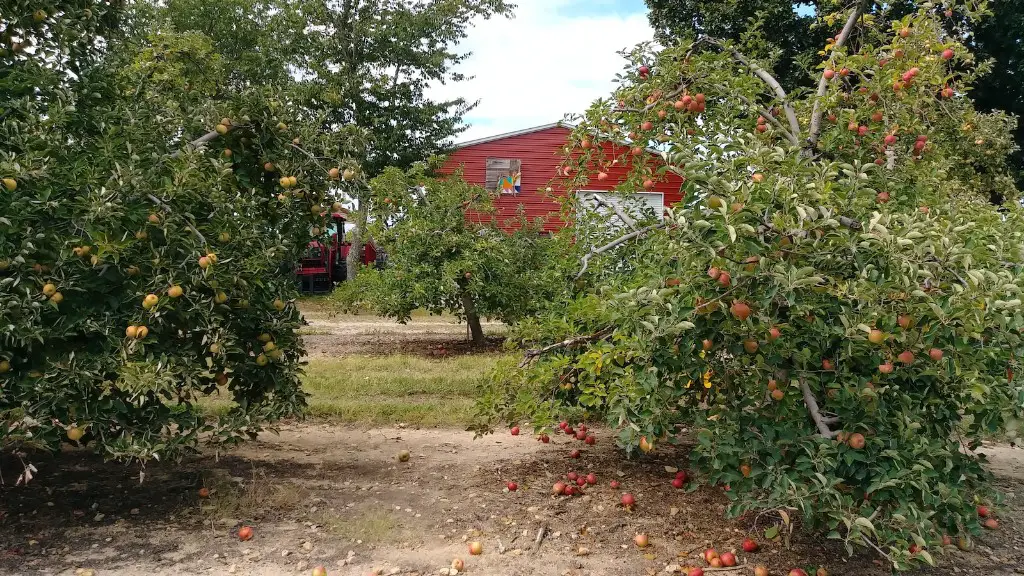Apple trees need regular pruning to ensure they bloom to their full potential in the coming growing season. Pruning an apple tree involves removing some branches and stems, in order to increase the tree’s capacity to flower more abundantly. Here are some tips to help you prune your apple tree with success.
Start with a plan. Before pruning, decide how you want your tree to look. For example, create a garden plan for your tree if you don’t have one already. Setting your end goal ahead of time helps guide how you shape the tree.
Check for crossed branches. Once your plan is developed, carefully inspect your tree for any intersecting or crossed branches. Small branches can be pruned off as long as they’re not too large. If there are any large branches crossing and/or rubbing against each other, they should be removed in order to prevent potential damage. Prune back to the trunk or main branches of the tree.
Review the shape of your tree. When branches and twigs have been identified for pruning, look at the overall shape of the tree. You want to preserve the natural shape of the tree, but also make sure that it is evenly distributed.
Cut off dead branches. It’s always a good practice to start by removing any dead, damaged, or diseased branches first. Dead branches will lead to a weakened tree, so it’s important that they’re pruned as soon as possible.
Eliminate old wood. In addition to dead wood, prune away any old wood from the previous growing season. This exposes more of the branch and twig structure to more sunlight and air circulation, which encourages more new growth.
Thin out the center. Next, thin out the center of the tree to allow for more light and air flow into its interior. This can be done by pruning away small branches or twigs that are located in the interior of the tree.
Selecting the Branch to Prune
When pruning your apple tree, be sure to select either the smallest or thinnest branches and stems to prune from. This will keep the tree from becoming “lopsided” as larger branches can weigh down its overall shape. Avoid taking more than one-third of the tree’s branches as this will cause further disruption to its overall look.
Pay close attention to the length of existing branches when selecting the branch to prune. You want to make sure that the remaining branch is long enough to reach the desired shape of your tree.
After selecting the branches you want to prune, use pruning shears or a saw to remove. Make the cuts just above where the branch meets the trunk or main branches. Try to avoid leaving any stubs, as they can cause stress to the trees.
When pruning existing branches, keep a few things in mind that will help prevent further stress. Firstly, make sure you don’t prune too much of a branch as this can weaken the entire tree. Secondly, keep your pruning shears sharp to avoid damaging the tissue of the tree.
Finally, use a proper pruning technique to avoid tearing the bark of the tree. Start by making a few shallow cuts and then finish off with a few deeper cuts. This will help keep the tree from being overly damaged by pruning.
Pruning Young Trees
Pruning a young apple tree is important to ensure it continues to grow and develop into a healthy, fully blooming tree. Start by pruning off any competing or crossing branches. This helps promote the growth of the main leader and allows more light and air to the interior of the tree.
Also, look for any branches that are growing too close to each other and thin them out. Keeping the branches spaced apart helps eliminate competition, which in turn stimulates more vigorous growth.
Young trees should be pruned every one to three years to ensure they have the proper amount of new, vigorous growth. When pruning young trees, be sure to prune small branches and thin out slow-growing stems. Avoid large pruning cuts and trim lightly to avoid any undue stress on the tree.
In addition, always make sure to prune above a bud so that the tree can regrow from the pruning site. This helps the tree to replace branches that are really small and thin.
Finally, keep an eye out for any pests or diseases that may be affecting the tree and take immediate action. Pruning away damaged or diseased branches helps keep pests from spreading to the other areas of the tree, which prevents further damage.
Pruning Mature Trees
Pruning mature apple trees is a bit different than pruning young trees. Mature trees should be pruned every three to five years. This helps the tree stay in healthy shape and promotes vigorous growth of branches and twigs.
Start by pruning off any crossed branches that are intersecting with each other. This helps to remove competing limbs which will open up the tree to increased air flow. Also, prune away any branches that are overhanging or growing too low to the ground.
In addition, carefully inspect the tree for any dead, weak or diseased branches. If any of these are present, carefully prune them away. Make sure to prune above a bud so that the tree can regenerate from the pruning site.
It’s also important to keep an eye out for any pests and diseases. If any of these are present, make sure to prune away infected branches and treat the tree with appropriate chemicals or sprays.
Finally, be sure to inspect the tree for any structural issues. Old trees often need some kind of structural support to help keep them upright and balanced. This can be done by adding stakes and/or guy lines.
Care After Pruning
After pruning, it’s important to make sure that the tree is taken care of. This includes making sure the tree is watered and fed on a regular basis. Keep an eye out for any pests or diseases, and be sure to get rid of any weak or dead branches.
Also, ensure that the tree is not overwatered. Too much water can cause the soil to become waterlogged and can create further stresses on the tree. On the other hand, not enough water can cause the tree to dry out, causing weak branches and twigs.
Finally, make sure to pick up any pruning shears and branches that are lying around the tree. This will help prevent any potential problems from occurring.
Using Pruning Tools
In order to prune your apple tree efficiently, it helps to have the right tools on hand. Pruning shears are a must and they should be kept sharp. This helps to ensure the cuts are clean and precise.
A handsaw can also be useful for pruning off larger branches and twigs. Make sure to use the saw slowly and carefully, as doing so prevents torn bark and damage to the tree.
On larger trees, a pole pruner can come in handy. This type of pruner helps reach higher up branches without having to climb the tree. Keeping the pruner sharp is important to help maintain a good quality cut.
It’s also important to use protective gear when pruning. This includes gloves, goggles and safety glasses. Always follow safety protocol to reduce the risk of accidental injury.
Finally, be sure to clean and store your pruning tools properly. This will help keep your tools in good condition and will also reduce the chance of spreading any pests or diseases between different trees.




